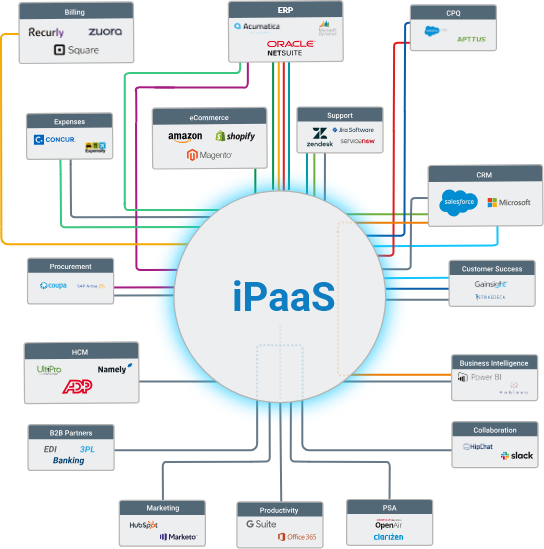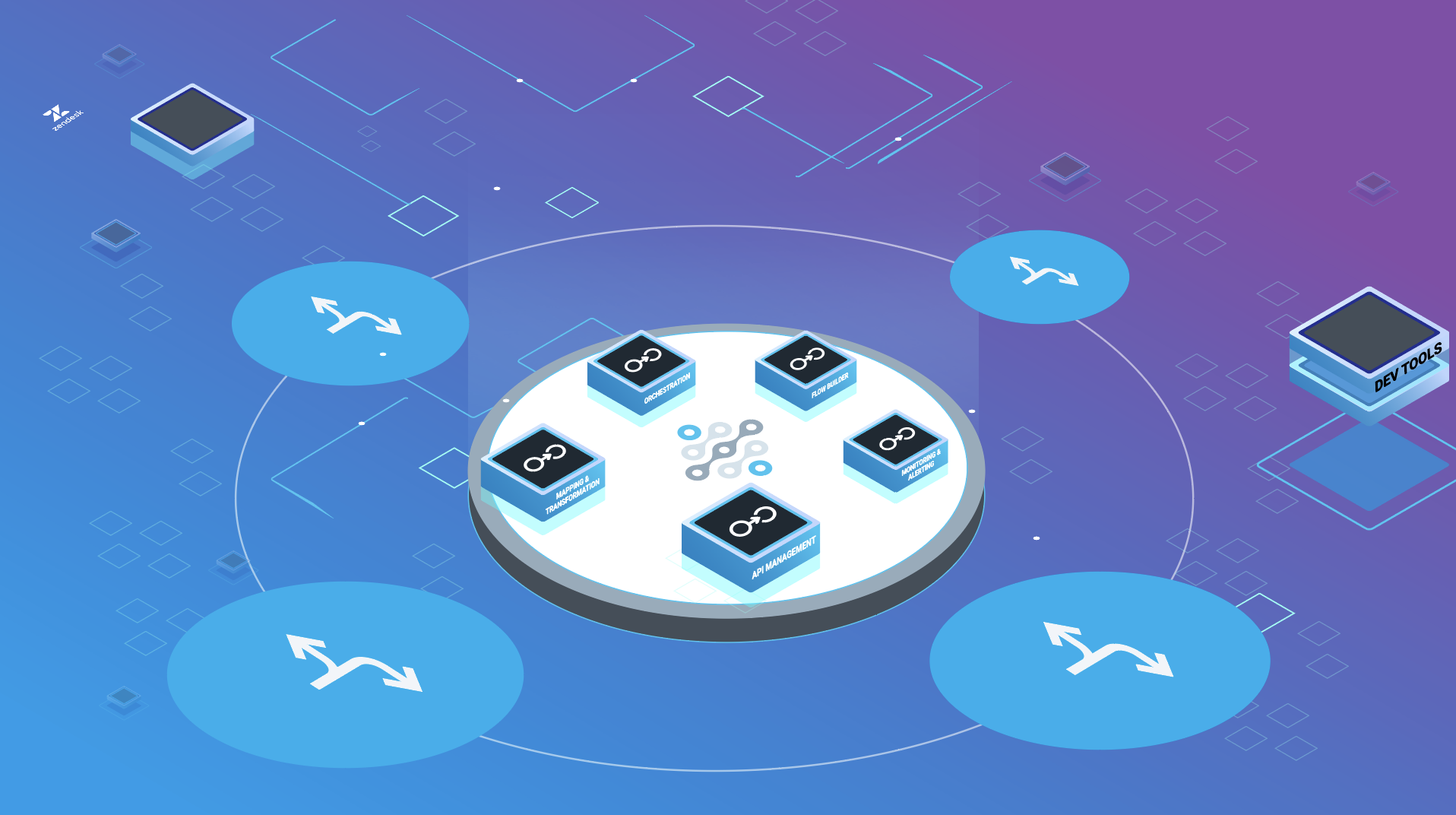What Is App Integration, Data Integration, API Integration, and iPaaS?
Researching integration tools can be confusing as multiple terms are used interchangeably to describe various integrations. What is application integration vs data integration? What is API integration? Let’s set some context and properly define these terms and how they are related.
What is Application Integration?
Application, or App Integration, is the process of bringing resources from one application to another and often uses middleware. In most modern organizations, this generally means connecting multiple cloud apps together. This can also be referred to as Cloud Data Integration. In organizations where legacy systems exist, application integration also includes connecting on-premise and cloud apps. The applications addressed are typically core applications like ERP, CRM or e-commerce platforms where many business processes rely on data from other cloud-based apps.
Who uses application integration solutions?
- Cloud application integration solutions are typically tailored towards a tech-savvy business user or IT staff but don’t usually require specialized skills.
- On-premise application integration solutions are typically tailored towards large enterprise use cases and used by IT staff with specialized skills.
What is Data Integration?
Data integration is a combination of technical and business processes used to combine data from disparate sources into meaningful and valuable information. Data integration goes beyond simply moving data from point A to point B by doing things to the data to make it more usable. Legacy data integration platforms are traditionally thought of as on-premise middleware solutions. They are often referred to as ETL solutions, meaning they extract, transform, and load data to another system. Modern cloud data integration solutions follow the same concepts as on-premise data integration tools but, obviously, are used for integrating cloud apps or cloud to on-premise applications. The difference between application integration vs data integration is therefore subtle.
Who uses data integration solutions?
- Cloud data integration solutions are typically tailored towards a tech-savvy business user or IT staff but don’t usually require specialized skills.
- On-premise data integration solutions are typically tailored towards large enterprise use cases and used by IT staff with specialized skills.
What is iPaaS?

Integration Platform as a Service (iPaaS) is a modern application integration solution that borrows key data integration concepts. iPaaS allows you to not only integrate multiple applications but manipulate, augment, and validate data quality as data is being moved. You can think of iPaaS as the offspring of app integration and data integration parents. If deployed on-premise, they follow the more traditional models of enterprise application integration (EAI) or ETL tools. We have a detailed definition of iPaaS for a complex breakdown of the term and its origins.
Who uses iPaaS solutions?
- iPaaS platforms can be tailored to both tech-savvy business users and IT staff. This is dependent on the complexity of the use cases the platform supports and if the solution is cloud-native vs. an on-premise solution running in the cloud.
- In general, relatively straight-forward uses cases can be accomplished by tech-savvy business users as most iPaaS solutions provide guided configuration options. For more complex use cases, typically IT or DevOps staff are implementing the solution.
- Celigo users utilize iPaaS for a wide range of business processes, including Order to Cash integration, SaaS integration, and Ecommerce integration.
What is API Integration?

API integration allows two applications to talk to each other through software called an Application Programming Interface (API). APIs power most modern applications and enable others to develop interfaces to those applications. For example, if you buy something on Amazon using your phone, you’re using an API.
In the context of app integration, APIs enable the integrations to happen. Most application integration tools and iPaaS solutions provide an abstracted view of an application’s API by offering pre-built connectors or adapters and some level of API management. API integration platforms allow you to work with the APIs natively, and offer tools to make it easier and faster to build integrations. They also typically have more robust API management capabilities necessary for those building APIs for others to use.
Who uses API solutions?
- API integration platforms are built for and used by developers.
Your Monthly Competitive Advantage
Access integration-driven automation tips and resources in the Celigo Automator newsletter.

